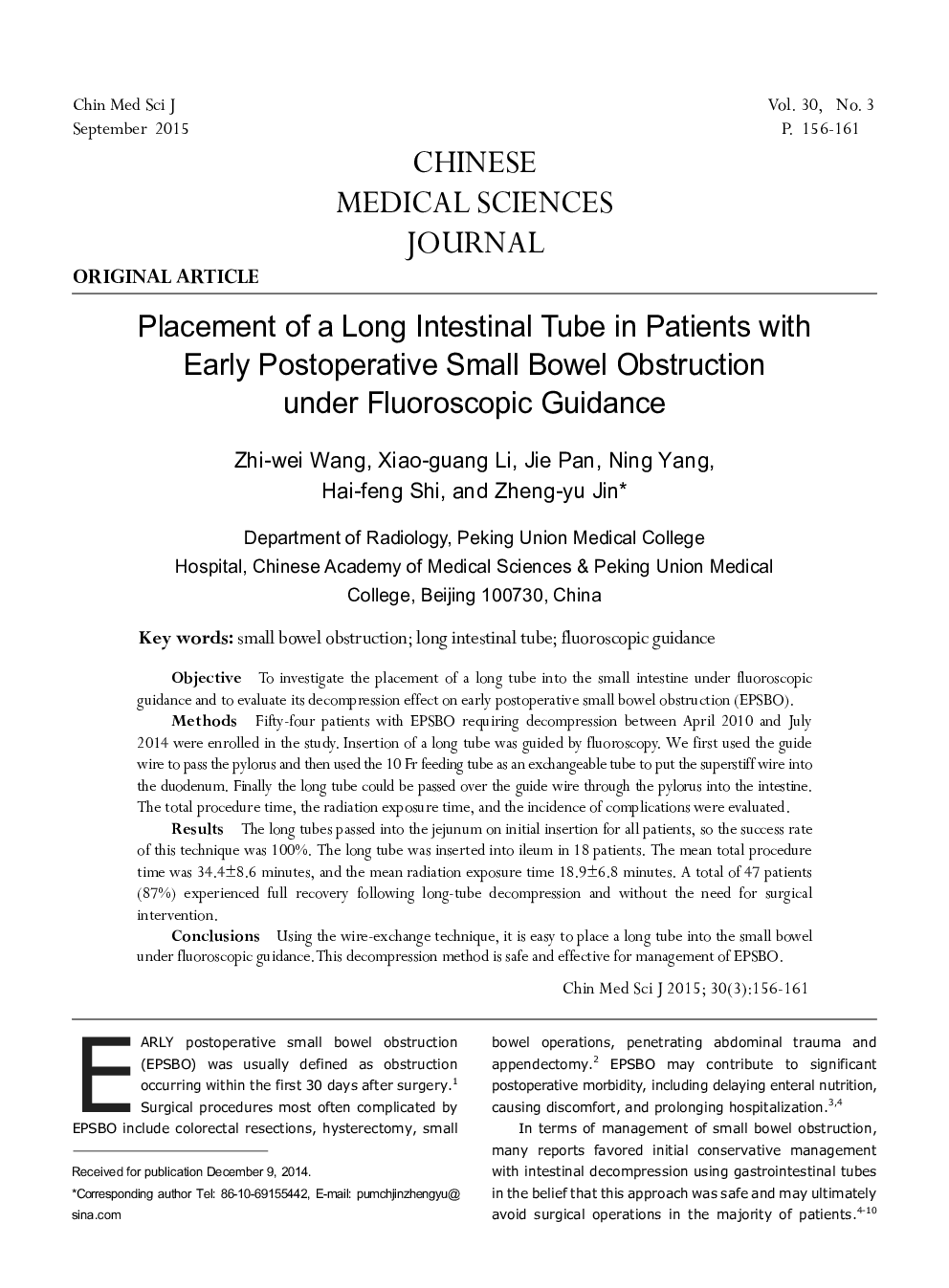| Article ID | Journal | Published Year | Pages | File Type |
|---|---|---|---|---|
| 3459469 | Chinese Medical Sciences Journal | 2015 | 6 Pages |
ObjectiveTo investigate the placement of a long tube into the small intestine under fluoroscopic guidance and to evaluate its decompression effect on early postoperative small bowel obstruction (EPSBO).MethodsFifty-four patients with EPSBO requiring decompression between April 2010 and July 2014 were enrolled in the study. Insertion of a long tube was guided by fluoroscopy. We first used the guide wire to pass the pylorus and then used the 10 Fr feeding tube as an exchangeable tube to put the superstiff wire into the duodenum. Finally the long tube could be passed over the guide wire through the pylorus into the intestine. The total procedure time, the radiation exposure time, and the incidence of complications were evaluated.ResultsThe long tubes passed into the jejunum on initial insertion for all patients, so the success rate of this technique was 100%. The long tube was inserted into ileum in 18 patients. The mean total procedure time was 34.4±8.6 minutes, and the mean radiation exposure time 18.9±6.8 minutes. A total of 47 patients (87%) experienced full recovery following long-tube decompression and without the need for surgical intervention.ConclusionsUsing the wire-exchange technique, it is easy to place a long tube into the small bowel under fluoroscopic guidance. This decompression method is safe and effective for management of EPSBO.
